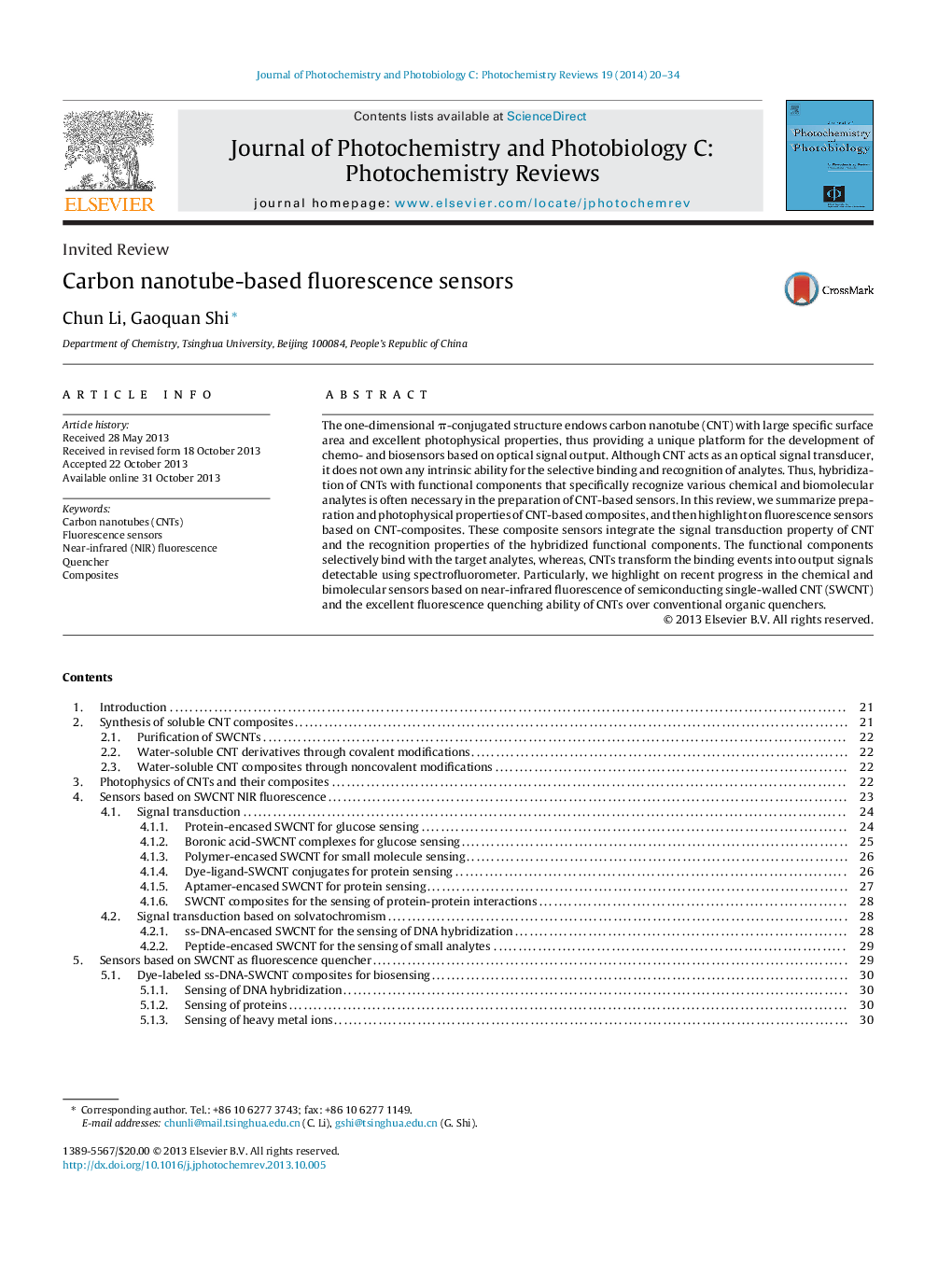| Article ID | Journal | Published Year | Pages | File Type |
|---|---|---|---|---|
| 31435 | Journal of Photochemistry and Photobiology C: Photochemistry Reviews | 2014 | 15 Pages |
•The methodology of preparing CNT composites for fluorescent sensors is reviewed.•Recent studies on modulating the NIR fluorescence of SWCNT for sensors.•Methods to construct fluorescent sensors using CNT as a quencher are summarized.
The one-dimensional π-conjugated structure endows carbon nanotube (CNT) with large specific surface area and excellent photophysical properties, thus providing a unique platform for the development of chemo- and biosensors based on optical signal output. Although CNT acts as an optical signal transducer, it does not own any intrinsic ability for the selective binding and recognition of analytes. Thus, hybridization of CNTs with functional components that specifically recognize various chemical and biomolecular analytes is often necessary in the preparation of CNT-based sensors. In this review, we summarize preparation and photophysical properties of CNT-based composites, and then highlight on fluorescence sensors based on CNT-composites. These composite sensors integrate the signal transduction property of CNT and the recognition properties of the hybridized functional components. The functional components selectively bind with the target analytes, whereas, CNTs transform the binding events into output signals detectable using spectrofluorometer. Particularly, we highlight on recent progress in the chemical and bimolecular sensors based on near-infrared fluorescence of semiconducting single-walled CNT (SWCNT) and the excellent fluorescence quenching ability of CNTs over conventional organic quenchers.
Graphical abstractFigure optionsDownload full-size imageDownload as PowerPoint slide
